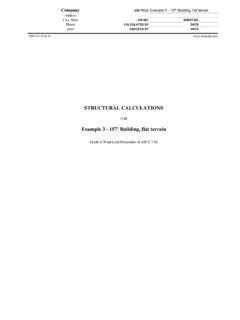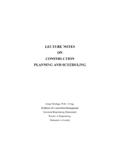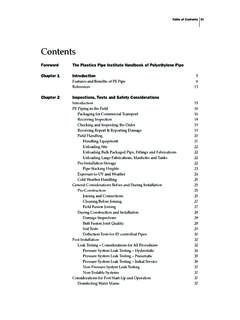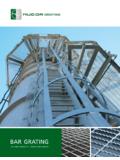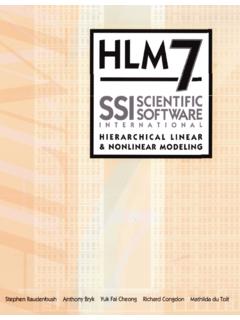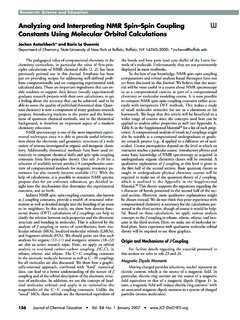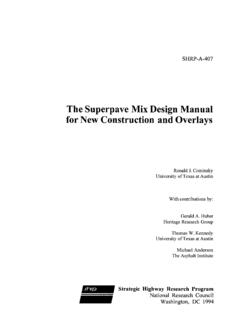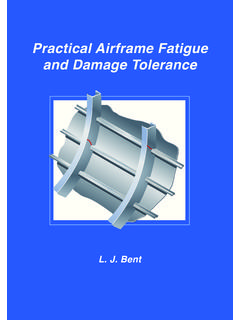Transcription of Copyright © 2004-2017 by GEO-SLOPE International, Ltd.
1 Copyright 2004-2017 by GEO-SLOPE International, rights reserved. No part of this work may be reproduced or transmitted in any form or by any means, electronic or mechanical, including photocopying, recording, or by any information storage or retrieval system, without the prior written permission of GEO-SLOPE International, Ltd. Trademarks: GEO-SLOPE , GeoStudio, SLOPE/W, SEEP/W, SIGMA/W, QUAKE/W, CTRAN/W, TEMP/W, AIR/W and VADOSE/W are trademarks or registered trademarks of GEO-SLOPE International Ltd. in Canada and other countries. Other trademarks are the property of their respective International Ltd1200, 700 - 6th Ave SW, Calgary, AB, Canada T2P 0T8E-mail.
2 Of ContentsPage iTable of Equilibrium and limit equilibrium force surface slip slip slip slip equilibrium forces and generalized surface of Safety limit equilibrium or Fellenius s simplified s simplified of Engineers assumption assumption of ContentsSLOPE/WPage s Generalized element stress-based on finite element stress-based an appropriate Drawdown Analysis Simple Effective Strength Rigorous Effective Strength Staged Undrained Strength Surface and and radius for circular radius radius extent of radius of Safety slip specified slip specified slip cross-over parallel and exit of soil frictional strength of unrealistic realistic slip surface cracks and exit crack tension crack crack fluid slip surfaces and factors of of ContentsPage surface crack point surcharge in of spline form curve fits for water content Mohr-Coulomb (Bedrock).
3 Data-point strength using an anisotropic as a function of to top of soil to specified combined : Strength as a function of overburden and Brown shear of ContentsSLOPE/WPage unit soil piezometric piezometric pressures head with spatial pore-water element computed and Structural related to concentrated lateral of reinforcement forces and stress factors of the various analysis and pile of numerical element stress-based with interaction safety of ContentsPage v10 Seismic and Dynamic loading Pseudostatic and Sensitivity density probability probability
4 Of failure and reliability statistical or unfavorable pressures and ponded of limit equilibrium Solution equilibrium factor of equilibrium factor of of ContentsSLOPE/WPage normal force at the of negative pore-water of safety for unsaturated of unsaturated shear strength for the factors of 1 2 3 of the various element stress stress and mobilized shear slope stability Carlo number of Monte Carlo 1: IntroductionPage 11 IntroductionAnalyzing the stability of earth structures is the oldest type of numerical analysis in geotechnical engineering.
5 The idea of discretizing a potential sliding mass into slices was introduced early in the 20th Century. In 1916, Petterson (1955) presented the stability analysis of the Stigberg Quay in Gothenberg, Sweden where the slip surface was taken to be circular and the sliding mass was divided into slices. During the next few decades, Fellenius (1936) introduced the Ordinary or Swedish method of slices. In the mid-1950s Janbu (1954) and Bishop (1955) developed advances in the method. The advent of electronic computers in the 1960 s made it possible to more readily handle the iterative procedures inherent in the method which led to mathematically more rigorous formulations such as those developed by Morgenstern and Price (1965) and by Spencer (1967).
6 One of the reasons the limit equilibrium method was adopted so readily, is that solutions could be obtained by hand-calculations. Simplifying assumption had to be adopted to obtain solutions, but the concept of numerically dividing a larger body into smaller pieces for analysis purposes was rather novel at the to this day, stability analyses are by far the most common type of numerical analysis in geotechnical engineering. This is in part because stability is obviously a key issue in any project will the structure remain stable or collapse? This, however, is not the only reason.
7 Concepts associated with the method of slices are not difficult to grasp and the techniques are rather easy to implement in computer software the simpler methods can even be done on a spreadsheet. Consequently, slope stability software became available soon after the advent of computers. The introduction of powerful desktop personal computers in the early 1980s made it economically viable to develop commercial software products based on these techniques, and the ready availability today of such software products has led to the routine use of limit equilibrium stability analysis in geotechnical engineering limit equilibrium software is making it possible to handle ever-increasing complexity within an analysis.
8 It is now possible to deal with complex stratigraphy, highly irregular pore-water pressure conditions, various linear and nonlinear shear strength models, almost any kind of slip surface shape, concentrated loads, and structural reinforcement. Limit equilibrium formulations based on the method of slices are also being applied more and more to the stability analysis of structures such as tie-back walls, nail or fabric reinforced slopes, and even the sliding stability of structures subjected to high horizontal loading arising, for example, from ice modern software is making it possible to analyze ever-increasingly complex problems, the same tools are also making it possible to better understand the limit equilibrium method itself.
9 Computer-assisted graphical viewing of data used in the calculations makes it possible to look beyond the factor of safety. For example, graphically viewing all the detailed forces on each slice in the potential sliding mass, or viewing the distribution of a variety of parameters along the slip surface, helps greatly to understand the details of the the graphical viewing of computed details has led to a greater understanding of the method, particularly the differences between the various methods available, it has also led to the exposure of limitations in the limit equilibrium formulations.
10 Exposure of the limitations has revealed that the method is perhaps being pushed too far beyond its initial intended purpose. The method of slices was initially conceived for the situation where the normal stress along the slip surface is primarily influenced by gravity (weight of the slice). Including reinforcement in the analysis goes far beyond the initial intention. Even though the limitations do not necessarily prevent using the method in practice, understanding the limitations is vital to understanding and relying on the the extensive and routine use of stability analyses in practice, it seems the fundamentals of the limit equilibrium method of slices are not well understood.

